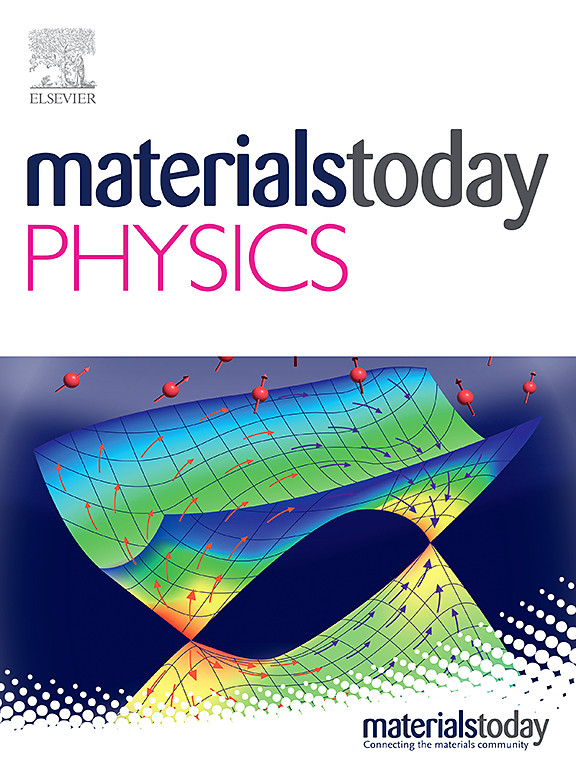揭示粒状超导薄膜中的引脚分布及相关涡旋模式演化
IF 10
2区 材料科学
Q1 MATERIALS SCIENCE, MULTIDISCIPLINARY
引用次数: 0
摘要
大多数基于薄膜的超导电子器件都呈现颗粒状结构。有人认为,晶界形成的网络具有相对较弱的超导性,有可能成为引脚中心。然而,迄今为止,有关引脚景观及其与涡旋行为关系的详细微观研究仍然很少。在这里,我们使用磁力显微镜在不同磁场下对粒状铌薄膜中的涡旋晶格(VL)进行了大面积扫描成像。在涡旋-涡旋相互作用和针刺效应的共同作用下,随着涡旋密度的增加,我们观察到涡旋晶格有序度的非单调演化。我们使用最近开发的扫描量子涡旋显微镜(SQVM)直接绘制了薄膜内针扎电位的空间分布图。与晶粒边界形成的网络结构不同,引脚分布呈现出类似网络的结构,但其域明显大于单个晶粒。基于 SQVM 所揭示的针刺图的数值模拟结果很好地再现了我们的实验。我们计算了低磁场下单位长度上的针刺力。根据涡旋的相对位置估算出的临界电流密度与临界状态模型非常吻合。我们的工作说明了涡流晶格随磁场的演变与粒状铌薄膜结构特征之间的关系,为高性能超导电子器件的设计提供了新的见解。本文章由计算机程序翻译,如有差异,请以英文原文为准。
Revealing the pinning landscape and related vortex pattern evolution in granular superconducting films
Most superconducting electronics based on films exhibit granular structures. It has been suggested that grain boundaries form a network with relatively weak superconductivity, potentially acting as pinning centers. Yet, so far, detailed microscopic studies of the pinning landscape and its relation to vortex behavior remain scarce. Here, we imaged the vortex lattices (VL) in granular Nb films using magnetic force microscopy over large scanning areas at various magnetic fields. A non-monotonic evolution in the degree of vortex lattice ordering was observed with increasing vortex density, driven by a combination of vortex-vortex interactions and pinning effects. The spatial distribution of pinning potential within the film was directly mapped using a recently developed scanning quantum vortex microscope (SQVM). Instead of the network formed by grain boundaries, the pinning landscape presents a network-like structure, yet with domains significantly larger than the individual grains. The results of numerical simulations based on pinning landscape revealed by SQVM well reproduce our experiments. The pinning force per unit length at low magnetic fields was calculated. The critical current density, estimated from the relative positions of vortices, aligns well with the critical state model. Our work illustrates the relationship between the evolution of the vortex lattice with magnetic field and the structural features of granular Nb film, providing new insights into the design of high-performance superconducting electronic devices.
求助全文
通过发布文献求助,成功后即可免费获取论文全文。
去求助
来源期刊

Materials Today Physics
Materials Science-General Materials Science
CiteScore
14.00
自引率
7.80%
发文量
284
审稿时长
15 days
期刊介绍:
Materials Today Physics is a multi-disciplinary journal focused on the physics of materials, encompassing both the physical properties and materials synthesis. Operating at the interface of physics and materials science, this journal covers one of the largest and most dynamic fields within physical science. The forefront research in materials physics is driving advancements in new materials, uncovering new physics, and fostering novel applications at an unprecedented pace.
 求助内容:
求助内容: 应助结果提醒方式:
应助结果提醒方式:


